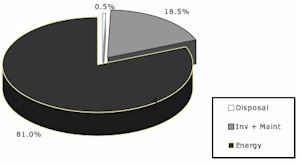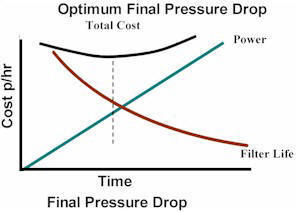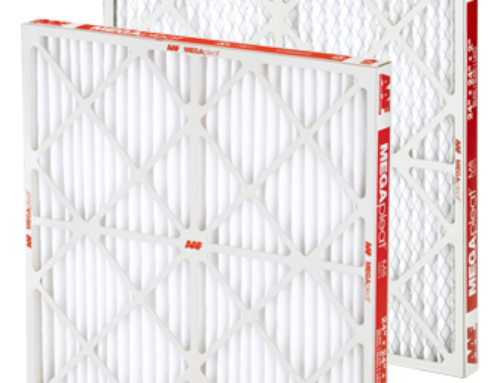We’ve always known that providing good air filtration to a building had many benefits from providing a cleaner healthier environment to protecting equipment, fixtures and processes. In January ASHRAE released the, “Report of Presidential Ad Hoc Committee for Building Health and Safety under Extraordinary Incidents.” HVAC air filtration moved to the forefront as a valuable way to help protect a building against bioterrorism.
In response to the current situation, many facility managers (FM) are either moving to or have upgraded their levels of air filtration. Some FM’s are not fully cognizant of the fact that increasing efficiency without regard to pressure drop can result in dirtier air and increases in energy usage/cost. Additionally, there is an increase risk of system malfunction, compromising overall HVAC system performance caused by reduced airflow.
Three major components to life cycle costing formula are initial investment and maintenance, energy consumption, and disposal (Chart 1). Based on operating characteristics, we know the cost breakdown is:

Because energy comprises such a large portion of the cost and because pressure drop is the precursor of this energy usage, providing clean air depends most on efficiency and pressure drop.
Even before a FM can determine what level of cleanliness they want, they must look at the capabilities of the system they have (we are assuming this is a retrofit with no new addition of HVAC equipment). Most large HVAC commercial grade systems are designed to handle pressure drops of one inch, possibly more, for the air filter resistance. Matching filter initial, final and average resistance to the system is critical for proper air filtration and air exchange rates.1 Also, providing pressure drop reading devices such as manometers or electronic pressure sensors is an absolute requirement.
Next, examine the pressure drops of various types and efficiencies of filters to find one that meets the requirements, or retrofit the filter bank or filter to include more filter surface area to lower the resistance.
The Chart 2 shows the visual on the optimal change-out point of an air filter – that point where the pressure drop increases electrical consumption and overtakes the initial cost of the filter.

The equation used to derive the optimum final pressure drop is:
Energy Consumption
(kWh)= Q ?P t ? 1000Q = Air Flow (m3/sec)
?P = Avg. Pressure Loss
t = Time in Operation (hrs)
? = Fan Efficiency
Putting the numbers in this formula, FM’s can expect to find lower overall electrical usage/operating costs for those filters that have lower average pressure drops. It can help determine the best time to change-out their filters.
Summary
System pressure is critical to the correct operation of the HVAC equipment. Facility managers can look to increase their level of air filtration efficiency and provide added protection for their building, but must also keep an eye on any added resistance to the system. Air filters that provide lower pressure drops through increased media area or newer synthetic medias can achieve the desired efficiencies and save energy. Working with a NAFA CAFS to determine the best recommended filter is critical to installing the correct filter for the system. Pressure drop reading devices are essential to determine optimum performance results and filter change-out frequency. Maintaining the HVAC air filter system with the proper measuring and monitoring devices will greatly assist the FM’s with managing the building’s air filtration systems.
References:
1 Chart 1: Carlsson, Thomas, “Indoor Air Filtration: Why Use Polymer Based Filter Media,” Filtration+Separation, Volume 38 #2, March 2001, pp 30 – 32
2 Chart 2: R.H. Avery, Optimum Final Pressure Drop, NAFA Guide to Air Filtration 3rd Edition, Chapter 13: Owning and Operating Costs.
3 ASHRAE Standard 62-2003, “Ventilation for Acceptable Indoor Air Quality”
Author(s): Dave Matela, CAFS, Kimberly Clark Corporation

